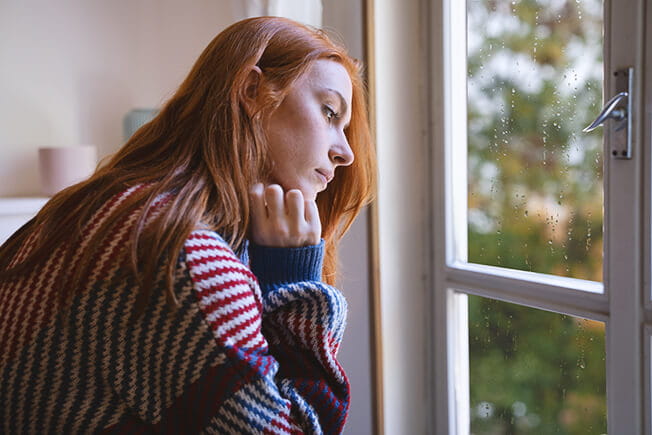Don’t let seasonal affective disorder darken your mood

When winter arrived this year, did a gloomy mood arrive with it? Did you start craving starchy foods? Did you notice changes in your energy level and need to sleep more?
If the shifting seasons have seemed to affect you this way, then you might have seasonal affective disorder (SAD) says Tatyana Hill, LPC, a psychotherapist at Mirmont Outpatient Center Broomall.
"SAD stands for seasonal affective disorder, which is a form of depression that's related to the change in the seasons," explains Hill. "As daylight hours get shorter in the fall and winter, people who are affected by SAD start feeling down in a way that affects their daily life."
This tends to be most common among those living in more northern regions. Women are also more likely than men to get SAD.
Seasonal affective disorder symptoms
SAD shares common symptoms with major depression, such as feeling hopeless and having trouble concentrating. However, people with SAD also tend to have other symptoms. These include:
- Overeating
- Gaining weight
- Feeling sluggish
- Oversleeping
Researchers aren't exactly certain what causes SAD, but many believe a disrupted "biological clock" — or circadian rhythm — may be to blame. Limited daylight during the fall and winter months affects the body in many ways that could contribute to SAD.
Light therapy to treat SAD
"If you think you might have SAD, it's important to reach out to a health care professional because there are ways to treat the symptoms," says Hill.
One possible option is light therapy. "Some people find relief by using a special bright light for about a half hour each morning as a way to make up for the lack of sunlight during the fall and winter," explains Hill. "This seems to alter the brain chemicals that regulate your mood."
If you're interested in trying light therapy, you'll need to get a light therapy box. Look for a model that's been specifically designated for the treatment of seasonal depression. Regular household lamps, salt lamps or lighting that is designated for other medical needs won't offer the same health benefits as a light therapy box.
More ways to lift your mood
Light therapy, of course, is just one option. Hill also recommends these other ways you may be able to lessen the symptoms of SAD:
- Try to get outside or soak in some sunlight through windows. A vitamin D deficiency can be related to SAD, and sunlight can help.
- Be more active. Exercise can help you feel better.
- Spend time with others. It may be harder to be social when you're depressed, but being alone can make you feel worse.
- Talk with a health care professional about whether medication might be right for you.
Next steps:
Make an appointment with Tatyana Hill, LPC
Learn more about our Women's Emotional Wellness Center
Using light therapy to treat seasonal depression
 Content you want, delivered to your inbox
Content you want, delivered to your inbox
Want to get the latest health and wellness articles delivered right to your inbox?
Subscribe to the Well Ahead Newsletter.
